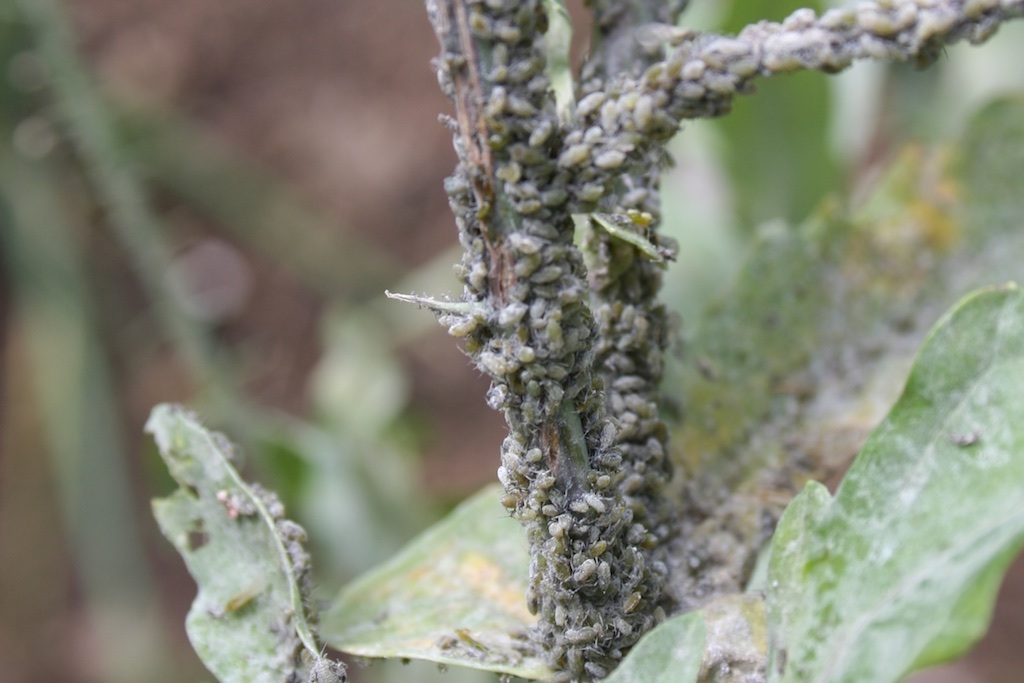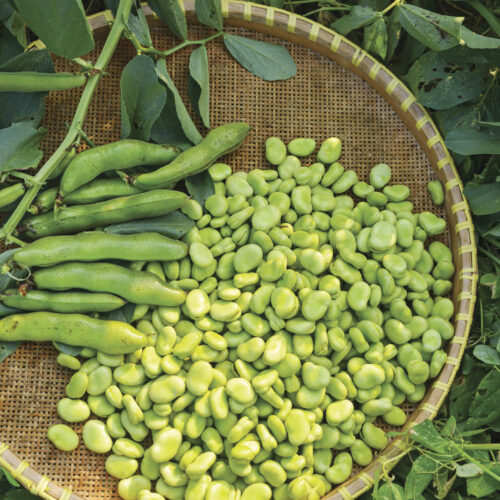Pesky aphids
2018-09-27T00:37:40+10:00
Spring is aphid season says Penny Woodward. Here's how to control them.
Aphids can be green, black, red, brown, grey and yellow. They are usually 1–2mm long and suck the juices of young shoots and buds causing stunting, yellowing and curling of leaves and shoots on many vegetables and ornamentals, but especially new growth on citrus and roses. They appear in spring, and create havoc for many months if not quickly controlled by you and/or the beneficial insects and other animals in your garden.
Start by using simple control methods like hosing them off or simply squashing them with your fingers (I like to have my gardening gloves on when I do this!). This will control them until their natural predators move in. You also need to control ants. Pests like aphids, scale and mealy bugs are often farmed by ants that carry them from one plant to another, establishing new infestations. Use grease and glue bands to stop this. Place a strong paper collar around the trunk of the tree or shrub, tie with string and rub the grease or glue onto the collar concentrating on the bottom edge, then fold part of this edge under to ensure you catch any that try to sneak underneath. Make sure the shrub or tree doesn’t touch other trees that will allow ants access, and cut back any grasses or low shrubs that might be touching the trunk.
Planting strongly scented herbs and other plants nearby will help to mask the scent of the target plants, and actively repel the pests. When in flower they will also attract beneficial insects. Try any of the following: alyssum, balm of Gilead, calendula, catmint, chives, coriander, cosmos, dill, elder, fennel, garlic chives, hyssop, lemon ironwood, lavender, lucerne, marjoram, marigolds, melaleucas, mints, mustards, onions, oregano, parsnips, phacelia, queen anne’s lace, rosemary, savory, tansy, thyme, turnips and yarrow. It’s also a good idea to provide food and hiding places for insect-eating birds such as blue wrens, which voraciously feed on aphids. You can also purchase predators such as ladybirds and Aphidius wasp, that will feed on aphids.
By encouraging natural predators and providing shelter for spiders and insectivorous birds, and attracting predatory insects such as ladybirds, praying mantises, lacewings, and some wasps and flies, your garden will have fewer, shorter outbreaks of pests, including aphids. Diverse plantings with a range of flowering times and habitats provide food for immature forms of predatory insects and house a range of beneficial wildlife more effectively than you’ll get with a monoculture.
If none of the above strategies work, then use a homemade soap spray, garlic spray (see recipes below) or commercial insecticidal soap. As a last resort, use an organically certified pyrethrum spray, but remember that all of these will kill any insects they come into contact with, including beneficials, as well as the problem pest.
Garlic: Roughly chop 200g garlic – don’t bother to peel it. Add 6 tablespoons vegetable oil, cover and soak for 24 hours. Dissolve 20g pure soap in 1L of water, add this to the garlic mixture and mix well. Filter though fine gauze, store in a container in a cool, dark place. This spray will keep for several months. Use at a dilution rate of 1 part concentrate to 10 parts water.
Soap: Add a teaspoon of soap flakes or ecologically friendly laundry or dishwashing detergent, but be careful not to use too much or too often or you may damage your plant and leave a residue in the soil that will kill beneficial soil creatures. Commercial potassium-based soap sprays do not leave a residue so can be used more often.






